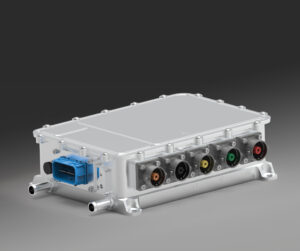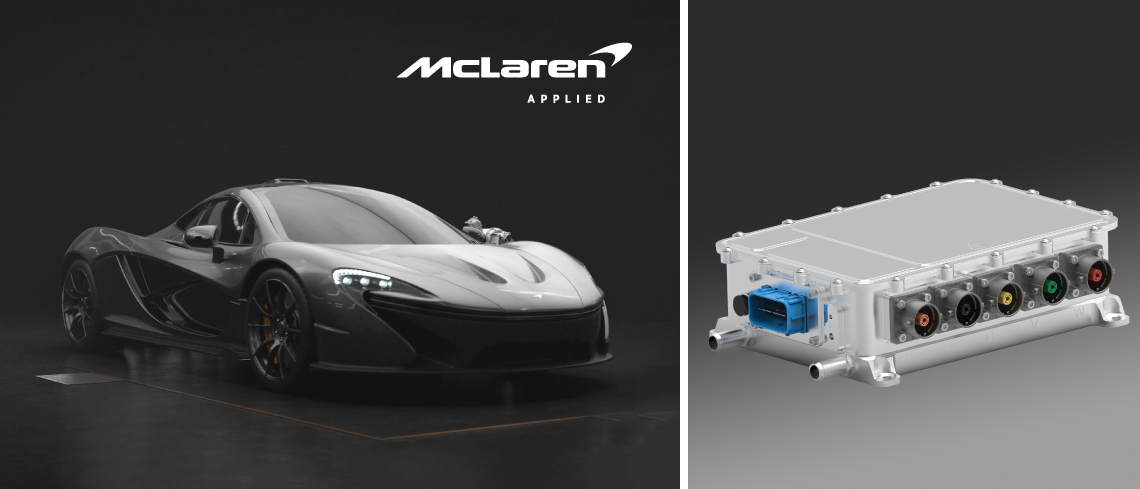Why did McLaren Applied use ST’s ADP480120W3 silicon carbide power module in their IPG5 800V traction inverter? The question is more complex and more urgent than it may appear. Electric vehicles are at a unique crossroads. They represent a significant improvement in the user experience, with J.D. Power reporting in 2022 that 96% of BEV (Battery Electric Vehicle) owners have a satisfaction level that exceeds 900 points out of 1,000. Yet, overall EV sales have grown slower than previously expected. Nation after nation is swearing off internal combustion engines with laws mandating EVs in the near future to help the environment. Yet, despite a willingness to support sustainable technologies, some consumers still reject even the idea of buying an EV.
2023 was an interesting year because the industry was reminded that car makers can’t just make an electric version of existing models or sacrifice pragmatism on the altar of pretentiousness. Consumers don’t just want an electric car; they want one that is affordable, reliable, and appealing. That’s why we decided to sit down with McLaren Applied. Indeed, supercar makers like Czinger are already using the IPG5 800V inverter, which relies on our ADP480120W3 SiC module, knowing full well that their extremely exigent clients highly value reliability and efficiency. Hence, let’s understand how McLaren Applied, a case study of our customer success stories, met those expectations and what it can teach mainstream car makers as its IPG5 800V inverter scales to higher volume applications.
ADP480120W3: The SiC power module shapes the vehicle
Under-promise, Over-deliver

It may be conceptually obvious, but too often, car makers forget this simple rule: performance matters. Choosing a lesser component simply to lower costs can get paradoxically expensive. McLaren Applied shared how the ADP480120W3 exceeded their expectations because some of our specifications were conservative, and the British team got more power out of the module than they had initially anticipated. The reason is that ST has been at the forefront of silicon carbide technology for the past 25 years, long before it was a buzzword. We are also leading the industry with, among other things, a unique hub in Italy, announced in 2022, that covers everything from SiC in powder form to the testing of manufactured devices.
The center can hold
One way McLaren Applied experienced ST’s expertise in SiC was when it drove the ADP480120W3 beyond the rated 480 A. While we don’t recommend it, it is a testament to the module’s robustness. In fact, the IPG5 800V supports a peak current of 540 A<sub>RMS</sub>. The reason is that the ADP480120W3 uses ST’s third-generation SiC power MOSFET. It means a low resistance (RRD(on)) of around 1.9 mΩ while the rest of the industry hovers around 3 mΩ at 400 A only. McLaren Applied tested numerous competing alternatives. The work McLaren Applied put in before settling on the ADP480120W3 is a testament to the importance of the power module in a traction inverter.
The collaboration shapes the innovation
Brothers in arms
Besides performance and reliability, the electric car industry has to deal with sourcing issues. Even if EVs face challenges, they are not going anywhere, and the demand for silicon carbide, an essential material that makes them efficient and powerful, is drastically increasing. Concomitantly, carmakers must enjoy stable and plentiful volumes of SiC devices, or shortages will make their new models too expensive and rare. McLaren Applied explained that this was another reason their teams chose our ADP480120W3. After decades of working on planar architectures and optimizing our manufacturing to improve yields, ST guaranteed the volumes McLaren Applied needed to satisfy customers.
In fact, our assembly lines were even flexible enough to tailor to their unique needs. Indeed, McLaren Applied explained how their design required a power module with a self-clinching nut instead of the regular floating nut on the standard package. Consequently, ST’s teams in Catania, Italy, worked with the British company to create a bespoke model that would meet their needs and simplify their operations. ST was the only company able to meet this requirement, partly because our expertise in silicon carbide power modules enabled us to quickly tweak manufacturing to new specifications, something that another SiC maker with less experience or resources just can’t do.
The price is right
Experience and manufacturing capabilities also enabled us to meet McLaren Applied’s cost objectives. Power modules represent 60% of the bill of materials on a traction inverter. Hence, while performance is critical, price still plays a role. ST’s yields and manufacturing operations led to a cost-effective solution, a milestone because the automotive industry is famous for its trickle-down business model. Higher-end vehicles get innovations first. Then, as new technologies become more affordable, they move to more mainstream units. As we write about our power module in supercars today, ST is also fulfilling orders for much more traditional EVs, thus helping to democratize this more sustainable mode of transportation by helping to bring sticker prices down.
